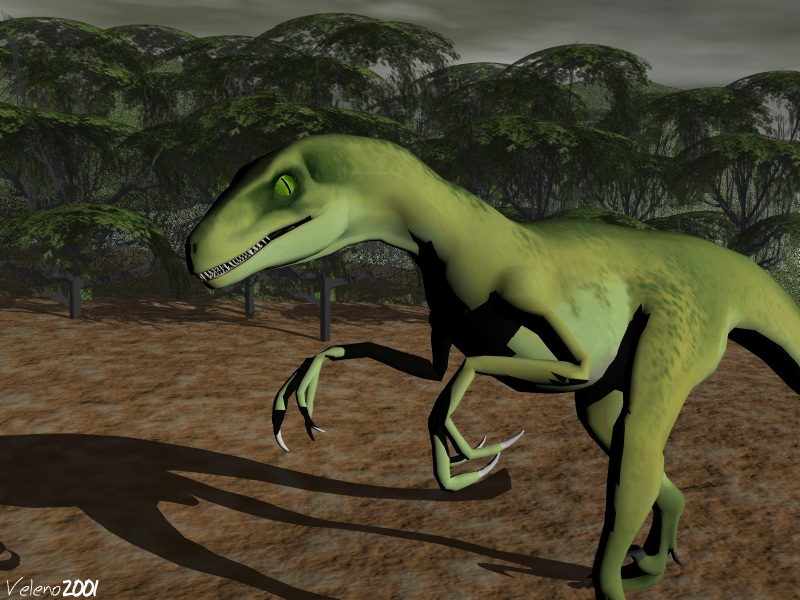


The study of dinosaur skulls demonstrates that the Velociraptor had excellent hearing and binocular vision. However, their intelligence was still not above that of modern "basal" birds like ostriches and geese. Velociraptor had a fairly large brain, compared to other dinosaur species, which made them fairly intelligent compared to other non-avian theropods. Based on other Deinonychosaurs, Velociraptor was probably precocial, meaning that, even if it had parental care, it was capable of moving around and finding it's own food very on t's lifetime. However, some modern reptiles like turtles also have these skewed proportions, so they could equally be related to simply sense and ecology, with large eyes favoring nocturnal vision. This indicates that the babies were fed and looked after by the adults for some period after hatching. Young Velociraptors had proportionally shorter snouts and bigger eyes than the adults, what's very usual for avian animals, such as Velociraptor. Despite this, fossilized skulls of Velociraptor young were recently found. The female pelvis is very wide, which may be evidence for this theory. According to paleontologist David Burnie, it's quite possible that Velociraptor gave birth to live young. We have no clear evidence that Velociraptor hatched from eggs.


Velociraptor as it appeared in Dinosaur Revolution Its diet also included small animals, such as lizards. Since the Fighting Dinosaurs specimen was found with a Protoceratops, it probably ate this small ceratopsian, but it may have hunted even larger prey. They used their front claws to capture and hold their prey while they ate. Some of the Velociraptor skeletal remains have been found in close proximity of each other, which led scientists to believe that Velociraptor probably hunted in packs however, they have also been interpreted as being congregations similar to scavenging komodo dragons, or nesting birds. Velociraptor was a carnivore who probably ate anything it could capture, sense its size was slightly larger than a turkey, the most likely prey were small mammals and dinosaurs. It is considered a national treasure of Mongolia. This suggests they were either fighting or had fatally injured each other, before being buried. The foot claw of the Velociraptor has been embedded into the neck of the Protoceratops, while the right arm of the Velociraptor has been bit and broken by the Protoceratops. Both were fighting when a sand dune collapsed, killing the two dinosaurs and preserving them in their death pose until 1971, when they were unearthed by a Polish-Mongolian team. mongoliensis with its right arm clamped firmly in the beak of the small sheep-sized ceratopsian Protoceratops andrewsi (GIN 100/25). The most amazing find in Mongolia may be the discovery of the skeletons of the small theropod V. It was found in the Late Triassic sandstones of the Djadokhta Formation in the Gobi Desert, and was also found lying alongside a skull of Protoceratops. In 1922, the first specimen of Velociraptor mongoliensis (AMNH 6515) was found by the American Museum of Natural History. While this stiffened the vertical mobility, the tail could still swing side to side, possibly acting as a rudder during gliding. This allowed the tail to act as a balance when the animal walked and ran. This was raised off the ground, which can be seen in footprints of itself and other related dinosaurs.Īnother dromaeosaurid feature that can be clearly seen in the death-pose are the long pieces of bone along the sides of the bones of the tail to stiffen it. Like other dromaeosaurs, it had a falcarian claw on the second digit of its foot. The arms were long and it had strong chest and arm muscles, for grasping onto prey. The jaws were lined with serrated teeth for tearing flesh, it swallowed its food in gulps instead of chewing, like most theropods. Velociraptor was a small theropod, with a large sickle-shaped claw on the second toe of its foot, it had a long, narrow, upturned snout, which is different from the other members of its family. 6 Velociraptor in pop culture vs the actual Velociraptor.


 0 kommentar(er)
0 kommentar(er)
